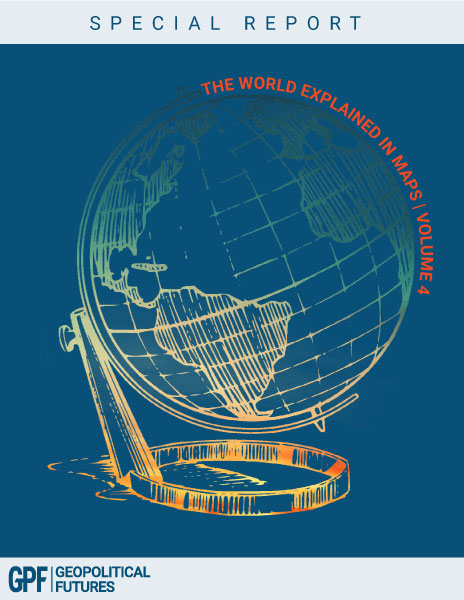by Fabrizio Maronta
Originally published on Limes 5/2024 Misteri persiani.
1. When on 8 May 2018, Donald Trump announced the withdrawal of the United States from the Joint Comprehensive Plan of Action (JCPOA, the Iran nuclear agreement) that had come into force two years earlier, a new phase opened. It was a phase characterised by a further marked deterioration of the troubled relations between Washington and Tehran. The former was intent on applying, mainly by means of sanctions, the ‘maximum pressure campaign’ against Iran in order to isolate it and induce its strategic negotiating capitulation. Tehran was determined to relaunch its decades-old strategy of ‘resistance’ to US pressure. Since then, news reports and analyses have mainly focused on the external manifestation of this strategy: that ‘Shiite Axis of Resistance’ that, passing through the pro-Iranian militias in Iraq and Syria and the Yemeni Houthi, expresses itself in Lebanon through Hezbollah and in the Gaza Strip through Hamas, whose brutal assault on 7 October 2023 precipitated a bloody war and deepened even more (if possible) the furrow between Israel and the United States on the one hand, and Iran on the other.
However, the strategy of resistance has also an equally relevant internal aspect. It contributes to explaining the Islamic Republic’s surprising survival to decades of Arab-Western ostracism, a survival that should not be taken for granted. Furthermore, this strategy feeds a system of power that, in a vicious circle, stands as both bastion of conservation and sworn enemy of any possible détente, as it thrives on the economic, political, and cognitive distortions produced by international isolation. This system hinges on the Basij (an organisation for the ‘mobilisation’ of the oppressed), the birth, evolution and degeneration of which are consubstantial to the parabola followed by the Khomeini system and this system’s relationship with Iran’s strategic surroundings.
The Basij is a direct emanation of the Guardians of the Revolution, also known as the Pasdaran. These came into being in 1979 – shortly after the deposition of Shah Mohammad Reza Pahlavi by the revolution led by Ayatollah Ruhollah Khomeini – as a popular militia called upon to defend the Revolution and to oppose the regular army, whose loyalty was considered dubious on account of the closeness to the old regime. The war fought from 1980 to 1988 against Saddam Hussein’s Iraq – the Islamic Republic’s baptism of fire – transformed the Guardians into a land, air and naval military organ, making them the backbone of the Iranian Armed Forces from then on. In those years, the Pasdaran also began to emerge as an economic player of some importance on the national scene, favoured by the multiplication of their ranks, by the policies of autarky promoted during wartime and by the first rounds of American sanctions imposed during the long conflict that saw the United States support Iraq to contain Iran.
It was within this framework that the Basij was created in 1980. A paramilitary force framed within the Pasdaran, it soon became the main unit for recruiting, training and deploying volunteers fighting against Iraq, thus playing a key role during the war. In 1990, at the end of the war, on the orders of Ali Khamenei – since 1989, Khomeini’s successor as Supreme Leader, i.e. the head of Iran’s power apparatus, a role he still occupies at the age of 85 – the Basij was promoted to the fifth division of the Pasdaran together with the Air Force, the Army, the Navy and the Quds Force (the Special Forces, mainly active outside the national borders). Officially, Iran reckons the basijis today number 13-15 million (out of a population of about 85 million), but independent estimates reduce the number to about 4 million: still a considerable figure, composed of 3 million regular members (those at a lower level, with indoctrination and basic ideological training), 800,000 active members (with a more structured ideological-military training and a more assiduous participation in militia activities), and around 200,000 special members (fully dedicated to the organisation in leadership and operational roles).
2. The end of the war with Iraq was a moment of historical caesura for the young Islamic Republic. The first, ramified penetration of the basijis into the national economy dates back to this time. The many frontline survivors who were in their ranks and in need of sustenance suffered the severe economic contraction of the immediate post-war period, due to the waning of the prolonged war effort to which Iran’s productive apparatus had been subordinated. After the cessation of hostilities, this apparatus – which piled upon the problems of civil reconversion the problems brought about by the post-Revolution wave of expropriations and nationalisations – fully manifested its inefficiencies: incomes stagnated, unemployment rose, and inflation galloped.
At the dawn of the 1990s, then-President Hashemi Rafsanjani and Supreme Leader Khamenei responded with a reform programme marked by privatisation and industrialisation with foreign capital. Given American sanctions, the hostility of the Arab world, the disaster the Russian economy was in at the time, and the immaturity of the Chinese ‘take-off’, Tehran made do with what it had. Rafsanjani therefore asked a plethora of para-statal organisations, including the Pasdaran and Basij, to participate in the modernisation of the economy and industry.
And yet, liberalisation as originally intended by the government – as fuel for socio-economic transformation and diplomatic normalisation – threatened the power and interests of the conservative bloc, that amalgam of traditionalist clergy, Koranic schools, sectors of the Armed Forces, and security apparatuses that had become the institutionalised base of the regime. Khamenei relied on this bloc to dislodge, in this order, the Islamist ‘left’ that dominated during the war years and the technocrats – the expression of a pragmatic, relatively moderate conservatism – who came to power under President Rafsanjani.
Among the components most benefiting from this policy were the Pasdaran, on whom the Supreme Leader counted as a bulwark of the regime and the Khomeinist clergy. To this end, Khamenei asked (imposed, to be more precise) the Executive to increase financial support to the Basij, which in 1992 created a foundation – the Basij Cooperative Foundation (BCF) – with the declared aim of providing services and support to militia members. A body with similar aims had already existed since 1982, but with the creation of the BCF, the welfare of the basijis took on a much broader, systemic and structured form. Above all, the Foundation went on to become the vehicle through which the Basij presided over growing sectors of the Iranian economy.
In 1996, following a constitutional reform desired by the Supreme Leader and approved by Parliament, the BCF made a dimension leap by incorporating the various Basij agencies in charge of providing housing, medical care, credit facilities, consumer goods, education and recreation to militiamen. A general expansion of these activities took place, especially in medicine and education. The bitter irony of Iranian-style ‘liberalisation’ was also becoming increasingly apparent. A process conceived by the reformers to depoliticise and re-dimension the military ‘caste’ through economic normalisation, ended up multiplying – due to the Supreme Leader’s intervention and the permanent tare of the embargo – the social role and political ascendancy of the caste, which took over the economy and subordinated it to its own self-preservation.
Between 1994 and 1995, at the time of the constitutional reform, Khamenei decreed that basijs and other war veterans were to have priority in the purchase of shares in privatised companies (and listed only on the Tehran Stock Exchange). The newly established BCF thus became the Basij’s main instrument to grab entire industries at favourable prices. Among the numerous enterprises run by (former) militia commanders that saw the light of day during this period, a prominent role was played by the Razmjoo Investment Company and its subsidiary Razmandghan (‘warriors’). Hoarding companies that had been put ‘on the market’ with BCF support, the company expanded in almost all sectors: industry, agriculture, services, transport. In this phase, the Basij was entrusted with the establishment of non-military bodies for the employment of workers, women, and students. It was also entrusted with religious police tasks, with powers often similar to those of other law enforcement agencies. In the context of Iran’s theocracy, the militia’s social role and ideological profile across civil life, such as in schools, universities, mosques, offices, and factories, was thus enhanced.
3. In the 1997 presidential elections, the reformist Mohammad Khatami achieved a clear victory over the conservative camp, thanks mainly to the young and urban vote. During his first term (1997–2001), through the support of a broad Islamic-Reformist front, the Ministry of Intelligence was ordered to cease all economic activities. This hindered further Pasdaran and Basij involvement in the national economy, causing a reaction that took the form of a renewed alliance between the military and the most backward and traditionalist wing of the conservatives. The principlists – this is the camp’s name – advanced an étatist economic agenda that merged President Rafsanjani’s emphasis on ‘privatisation’ and industrial modernisation with a greater role for the state in meeting the population’s economic needs. In practice, this state capitalism took the form, already during Khatami’s second term (2001–2005), of a strong consociative push for the gradual but unstoppable restoration of a prominent role for the Basij in the economy of Iran.
The principlists professed loyalty to the Supreme Leader, but the latter’s go-ahead to the new line-up owed much to the decisive role the Basij and the Pasdaran played in repressing the student protests that shook Tehran and other urban centres in 1999, when tens of thousands of university students harshly contested the theocratic regime and Khamenei. In the 2003 local elections and the following year’s parliamentary elections, the principlists obtained more or less large majorities, which facilitated the rise of several former Sepah commanders to high institutional positions.
Between 2001 and 2003, the US invasion of Afghanistan and Iraq exacerbated the Islamic Republic’s sense of insecurity and further strengthened the military’s economic role, with the blessing of a clergy that felt the imperatives of the ‘economics of resistance’ growing. The establishment of the Construction Basij Organisation (CBO) dates back to this period. It was initially aimed at fomenting support for conservatives in the countryside in order to counter the reformist bloc, which continued to draw the bulk of its support from urban areas, in the streets and at the ballot box. The CBO sent basijis to small villages and poorer areas to carry out local activities such as planting trees, helping with the agricultural harvest, renovating schools, and building mosques.
At this juncture, also benefiting from the new ‘military economy’ was the Army proper (Artesh), whose main construction company expanded its turnover by setting up several subsidiaries. However, the BCF was the main beneficiary of government orders, especially the largest ones, so much so that within a few years the equivalent of Artesh ended up working almost exclusively as a subcontractor for the conglomerate and the Army concentrated on other sectors, including airlines. With the financial support of the powerful bonyads (foundations) controlled by the Supreme Leader and his entourage, the BCF thus saw a new phase of growth. Among others, the subsidiaries Negar-ye Naser – active in the security sector – and Javansire-e Isar, for logistics, were established. In 2002, the Basij also entered the telecommunications sector with Ofogh (Horizon), which served as an intranet for militiamen but also operated as an Internet provider (for a fee) for civilians.
Also in 2022, the BCF further developed the financial branch: in that year, the Basij No-Interest Loan Institute was transformed into the Mehr Finance and Credit Institution, with over 500 branches in the country. Shortly afterwards, Mehr established Iranian Business and Development Investments to expand its stock exchange and construction activities. In 2005, the BCF thus succeeded in electing conservative and veteran Pasdaran Mahmud Ahmadinejad to the presidency in the best conditions to take advantage of the new political climate.
4. Ahmadinejad appointed Pasdarans to key positions in the Executive and during his two terms (2005 to 2013) the economic activity of the Guardians, especially the Basij, boomed. The Pasdaran were entrusted with contracts in the oil and gas sector worth around 25 billion dollars and the doors of the Oil Stabilisation Fund were opened to them. Set up in 2000 by Khatami to set aside part of the oil revenue to finance industrial development, the Fund became a source of capital for the new government’s generous social policies and for the allocation of contracts to the basijis.
Between 2005 and 2006, the Expediency Discernment Council – the constitutional revision body controlled by the Supreme Leader, created in 1988 to settle disputes between the Majles (Parliament) and the Council of Guardians, which over time became Khamenei’s advisory body – amended the Constitution’s Article (Principle) 44, which originally reserved almost all economic functions to the state. In 2007, Khamenei ordered the economic ‘liberalisation’ programme to be accelerated and Ahmadinejad’s government encouraged various para-statal entities, especially those belonging to the basijis, to increase their presence in the economic and financial sector. To this end, in the same year, the BCF reorganised its financial branch with the creation of the Mehr-e Eqtesad-e Iranian Investment Company (MEIIC), which in a short time acquired major shareholdings in numerous formerly state-controlled companies and in 2011 created the Mehr Bank. Today, the institution, the largest in the country, is present in important sectors such as credit, the automotive industry and construction (public and private).
In the meantime, the BCF’s main retail company, Basijis Consumer-Goods Provision Institution, became Iran’s largest operator in the sector, with over 3,000 shops throughout the country, while the Basijis Housing Institution merged with the Pasdaran’s counterpart (Khatamal-Anbia) to create the Basij Construction Organisation (BCO), the largest construction company of the basijis, one of the largest in the country and one of the main recipients of government contracts. At this stage, the Ahmadinejad-led government granted plots of land in suburban and rural areas for subsidised housing at bargain prices, which tripled the CBO’s contract volume. CBO also received orders from the main ministries for the construction and modernisation of schools, libraries, hospitals, places of worship, dams, highways, and other infrastructure projects, reaching more than 1,400 subsidiaries. The Basijis Medical Institution also increased the number and size of its clinics, while the branch of the Basij responsible for education and training increased the number of schools, training centres and annual publications.
2009 was another watershed. As had happened a decade earlier, the Pasdaran and the Basij were crucial in repressing the Green Movement, the wave of (again) mainly urban and student protests that harshly contested the election results, as Ahmadinejad again won against ‘reformist’ candidate Mir-Hosein Musavi. That year, the basijis took a fundamental step by setting foot in the bazaar, a term used in Iran to generically indicate the world of small trade and, by extension, the lower-middle classes that inhabit it and tend towards socio-religious conservatism. Thus was born the Guilds’ Basij Organisation (GBO), a trade ‘guild’ in charge of recruiting and organising bazaars (merchants and vendors) in the country. The GBO supported affiliates in various ways, including financially, in return for their supervision of the bazaar on behalf of the basijis – hence, of the regime.
5. The formidable economic-institutional rise of the Basij and more generally of the Pasdaran owes much to their role as “Guardians of the Revolution”, which with the theocracy’s gradual consolidation has evolved (or got entangled) into a bastion of a regime increasingly alien to the revolutionary and charismatic impetus of early Khomeinism. However, it cannot be explained without taking into account the inherently consociative nature of the Islamic Republic’s political-institutional apparatus, whose intricate system of power and crossed vetoes contemplates shortcuts that subject the ‘people’s militia’ to the direct control of the Supreme Leader.
In theory, Iranian para-statal entities are public organisations. In reality, they exist and operate in a limbo lying between the public and private spaces, allowing them to make the best of both worlds. They receive substantial resources from the state, but are not directly accountable to much of its apparatus for their conduct. The Pasdaran and even more so the Basij act in the economic sphere as a sort of para-state. They answer by constitutional dictate to the Supreme Leader alone, they bypass the control of both Executive and President, who have no say in their activities and in how they dispose of the various forms of public support. In addition to having direct access to the ayatollahs, the basijis benefit from the presence of their veterans in the country’s main political and administrative institutions, such as parliament and ministries, thus being able even to steer or sabotage the policies of unsympathetic Executives.
This ability to be both largely independent of state apparatuses and highly influential within them also characterises the bonyads, or charitable foundations, of which there are two types in Iran. There are those of a religious nature that base their wealth on waqf, the inalienable donation for charitable purposes regulated by Muslim law. Others are semi-public organisations set up after the Revolution to appropriate property and businesses confiscated from individuals who had links with the Shah’s regime. Some of these have become huge conglomerates that, like the basiji enterprises, thrive in the ambiguous space between the public sphere and the private economy: they enjoy substantial tax breaks and are contiguous to the apex of power in that they are directly answerable to the Supreme Leader, but they implement aggressive oligopolistic economic strategies similar to those of the Pasdaran, whose veterans not infrequently lead them. The bonyads, like the companies of the basijis with whom they have an organic relationship, therefore manage to bypass the Executive by drawing directly from the deep state.
The proof came again in 2013, when Iranians elected the centrist Hassan Rohani to the presidency. His cabinet, composed mainly of civilian technocrats, attempted a downsizing of the political and economic weight of the basijis and other Sepah components. However, Rohani’s long-lasting government – which remained in office for two terms until 2021, the year of the recently deceased Ebrahim Raisi was elected – did not substantially alter the role of the military in Iran’s political economy. Moreover, this role, although strongly supported by the conservative clergy, was paradoxically favoured by the secular and materialist evolution of Iranian society, which over the years pushed the regime to gradually change the system of incentives for enrolment in the Basij. In the 1980s – the years immediately following the Khomeinist Revolution and dominated by the conflict with pro-Soviet Iraq – the main impetus for enlistment was faith in the Islamic Republic and its Supreme Leader, hence the will to defend its existence with arms in hand. With the end of the war and Khomeini’s death, the ideological mood waned. Iranians began to redefine their values, and patriotic commitment declined. The Islamic Republic henceforth relied on economic-financial incentives to fill the ranks of the Basij.
Since the 1990s, several laws have been passed to make enrolment more attractive. Measures such as preferential admission to university and total or partial exemption from military service appeal to middle-class students; employment facilities, legal assistance and welfare – offered to all militiamen in any case – are mainly aimed at the lower social categories. Today, the law stipulates that the basijis must be assured, among other things, job opportunities (especially in the public sector, where they have reserved quotas), housing, subsidised credit, welfare and cultural services, education and vocational training, and facilitated access to higher levels of education. Especially in the last two decades, these incentives have become the main incentive to enlist. Furthermore, the militia promises enfranchisement and personal fulfilment to the most marginal strata of Iranian society, which explains why the poorer and less educated classes predominate among the militia.
While this does not undermine the Basij’s political influence and economic power, it does harm its image and social prestige, especially among the middle and upper classes and the young population in urban areas, who identify the Basij with the regime’s preservation and repressive nature. Surveys conducted since the mid-1990s show that, especially after the 2009 repression, many Iranians accuse the Basij of dishonesty, irrationality, unreliability, arrogance, incompetence, and prejudice.
Inflation hovers around 40%. The rial (Iran’s currency) has lost more than half its value in recent years. Official oil exports have plummeted from 2.5 million barrels per day in 2017 to 400,000 today, the bulk of which is exported to China. An indefinable amount of crude is exported by circumventing sanctions through triangulation schemes that blend it with (mostly) Malaysian, Omani, or Emirati oil, but even so, volumes are far from potential and prices per barrel remain below market prices. The country’s factories continue to produce cars, trucks, household appliances, electronics and many other consumer goods, but in inefficiently and without innovation (in 2022 Iran imported $8 billion worth of capital goods – in 2011, the figure had been $20 billion), so that products are often expensive and of low to medium quality. Sanctions also reduce household purchasing power, although the effect on sales is tempered by the fact that domestic industries produce many primary goods whose demand is inelastic. Increased economic and trade ties with China and Russia, therefore, do not offset the impact of the US embargo, but merely mitigate it.
Yet Iran remains standing and intent on pursuing the costly strategy of ‘resistance’, of which the manufacturing sector – where the role of the basijis is crucial – remains a pillar. Iran’s (permanent) war economy absorbed the sanctions shocks of 2012 (Obama) and 2018 (Trump) with a mix of diversification of supplies and outlet markets. When Europe reduced trade and technology interchange mainly due to US secondary sanctions, Tehran increased imports of European machinery from third countries, such as Turkey and the United Arab Emirates. Meanwhile, it benefited from Chinese technology exports, driven by Xi Jinping’s Made in China 2025 plan to buffer the growing ban on Western know-how with domestic production. While Iranian crude oil sanctioned by the United States and Europe found alternative outlets (mainly) in China, Iraq, the United Arab Emirates, and Afghanistan, Iranian exporters benefited from the heavy devaluation and hoarded raw materials and components to mitigate the embargo’s industrial effects. This allowed them to continue to meet domestic demand for most goods.
As the sanctions stratified, however, they accentuated the internal role and weight of the military, especially the basijis, the bastion of an ‘economy of resistance’ that favours oligopolistic concentration. The intermingling of political power with an economic power that is most likely partly beyond the control of the theocratic leadership was also strengthened. In addition to the formal – albeit strongly consociative – economy of large public contracts and authorised industrial and tertiary activities, the strong presence in the bazaar makes the Basij an important player in the vast informal economy, consisting of legal activities (mainly trade) that circumvent tax and other legal requirements. These two sectors are then flanked by the criminal economy – smuggling, the sale of military materials and equipment (including food rations) on the black market, arms and drug trafficking – to which the Basij and other military branches are likely to have access by virtue of their presence in logistics, from ports to road transport.
Finally, the Basij’s vast economic power reflects the annuity economy structured over decades of embargo, where the enormous weight of oil revenues on the public budget (around 50% of the total) makes the treasury a convenient means of foraging and where the structuring of conglomerates favours monopolistic conduct. The resulting socially conservative and politically reactionary bloc is today the major internal factor opposing a normalisation of relations with the United States. But also, consequently, with Israel and the Arab world.
Translated by Dr Mark A Sammut Sassi






